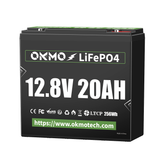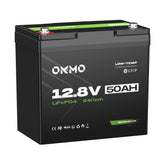Lithium Battery vs Alkaline Battery: Comprehensive Comparison & Applications
 When choosing the right battery for your device, two of the most common options are lithium batteries and alkaline batteries. While both are widely used in consumer electronics, tools, and backup power, they differ significantly in chemistry, performance, cost, and ideal applications. This article provides a comprehensive comparison between lithium and alkaline batteries, helping you understand their advantages, limitations, and the best use cases.
When choosing the right battery for your device, two of the most common options are lithium batteries and alkaline batteries. While both are widely used in consumer electronics, tools, and backup power, they differ significantly in chemistry, performance, cost, and ideal applications. This article provides a comprehensive comparison between lithium and alkaline batteries, helping you understand their advantages, limitations, and the best use cases.
1. What is a Lithium Battery?
Lithium batteries use lithium metal or lithium compounds as the anode. They are lightweight, offer higher energy density, and deliver stable voltage throughout their discharge cycle. Common types include:
-
Lithium Primary Batteries (non-rechargeable): Often used in cameras, medical devices, and small electronics.
-
Lithium-ion (Li-ion) Rechargeable Batteries: Found in laptops, smartphones, power tools, and electric vehicles.
-
Lithium Iron Phosphate (LiFePO4): A safer, long-cycle rechargeable lithium battery widely used in energy storage, solar systems, and RVs.
2. What is an Alkaline Battery?
Alkaline batteries are primary (non-rechargeable) cells that use zinc (Zn) and manganese dioxide (MnO2) as electrodes with an alkaline electrolyte (potassium hydroxide). They are one of the most affordable and readily available battery types, commonly used in household devices such as:
-
Remote controls
-
Clocks
-
Flashlights
-
Toys
-
Low-drain electronic devices
 3. Key Differences: Lithium vs Alkaline Battery
3. Key Differences: Lithium vs Alkaline Battery
| Feature | Lithium Battery | Alkaline Battery |
|---|---|---|
| Rechargeability | Rechargeable & non-rechargeable options | Mostly non-rechargeable |
| Energy Density | High (longer runtime) | Moderate |
| Weight | Lightweight | Heavier |
| Shelf Life | 10–15 years | 5–7 years |
| Performance in Extreme Temperatures | Excellent (-40°C to 60°C) | Limited (0°C to 50°C) |
| Cost | Higher upfront cost | Low cost |
| Best Use Cases | High-drain & critical devices | Everyday household electronics |
4. Applications of Lithium Batteries
Lithium batteries shine in high-performance and long-lasting applications, including:
-
Smartphones, laptops, and tablets
-
Electric vehicles (EVs)
-
Energy storage systems (solar & off-grid)
-
GPS devices and cameras
-
Medical equipment
5. Applications of Alkaline Batteries
Alkaline batteries are best suited for low-drain and budget-friendly uses:
-
Remote controls
-
Wireless keyboards & mice
-
Wall clocks
-
Toys
-
Flashlights
 6. Pros and Cons at a Glance
6. Pros and Cons at a Glance
Lithium Battery Advantages
-
Longer runtime & higher efficiency
-
Works in extreme temperatures
-
Rechargeable options available
-
Lightweight & compact
Lithium Battery Disadvantages
-
Higher cost
-
Requires proper handling and BMS (for rechargeable types)
Alkaline Battery Advantages
-
Inexpensive and widely available
-
Good for low-drain devices
-
Stable performance in household use
Alkaline Battery Disadvantages
-
Shorter runtime
-
Not ideal for high-drain electronics
-
Limited shelf life compared to lithium
7. Which Battery Should You Choose?
-
Choose Lithium Batteries if you need long-lasting, high-performance power for critical or high-drain devices. They are ideal for portable electronics, EVs, and renewable energy storage.
-
Choose Alkaline Batteries for affordable, everyday household applications where devices have low power demands.
 Conclusion
Conclusion
When it comes to Lithium Battery vs Alkaline Battery, the choice depends on your application, budget, and performance needs. Lithium batteries provide superior energy density, longer shelf life, and better performance, while alkaline batteries remain a low-cost, convenient solution for everyday devices.
👉 For long-term sustainability and high power requirements, lithium batteries are the smarter choice. For simple, budget-friendly household uses, alkaline batteries are sufficient.
🔎 Related searches:








